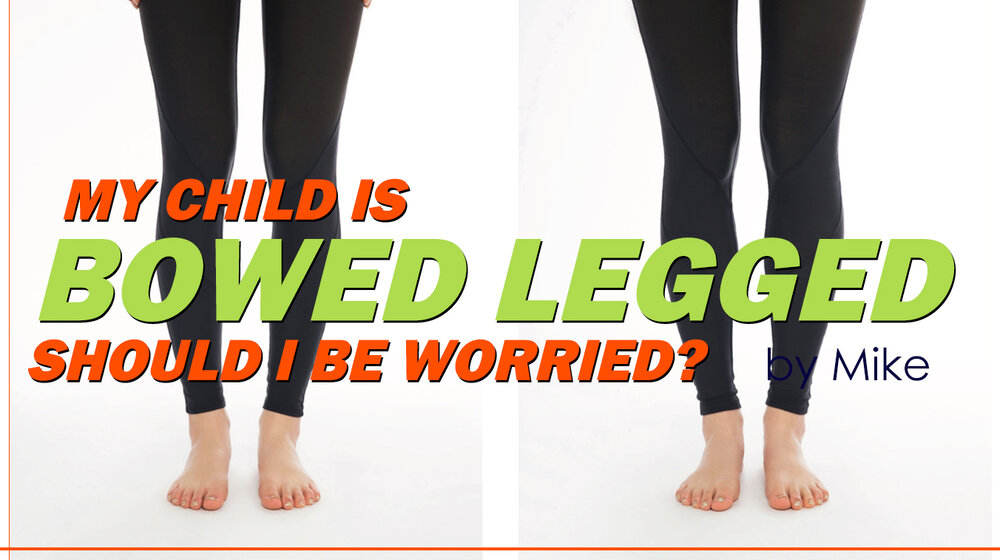A common question I receive from concerned parents is, why are my child’s legs bowed and is this something normal?
Today we will be unpacking the phenomenon of bowed legs and what to do if you notice this on your child.
What are bowed legs?

Normal alignment of the lower limbs ensure contact of the knees and ankles when in a close stance as portrayed in the middle image.
However, bowed legs, otherwise known as Genu varum, is marked by an outward bowing of the knee, meaning the lower leg is angled inward relative to the femur.
This can give the appearance of an archer’s bow.
How do bow legs develop?
Throughout the first few months and years we go through natural developmental sequences and hit critical growth milestones.
This is the time where we can witness a child going through physiological genu varum.
Meaning, within the first 2 years, bowed legs are completely normal and are expected in developing children.
In most kids, the outward bow of the legs corrects on it’s own by age 3 or 4. This can also give the appearance of a curved inward look known as knock-knees where the knees make contact without the ankles touching.
After this phase the legs usually migrate to a straighter look by age 7 or 8.
On the other hand, pathological genu varum where the bowed legs linger past 2 years of age can be due to a number of reasons including Blount’s disease, Rickets or bone and soft tissue deformation.
What should I do about my child’s bowed legs?
Bowlegs are a normal part of a child’s development.
Very rarely are they due to pathological reasons which may indicate bracing, vitamin D supplements or in very rare cases, surgery.
If you are worried about your child’s bowlegs, feel free to consult your general practitioner or physiotherapist where they can provide further information and order scans or refer you on to the correct specialist if need be.
It is also important to note that kids with bowlegs don’t need to limit their activity. Feel free to let them run, walk and play as other kids their age.
#MakingHealthySimple

